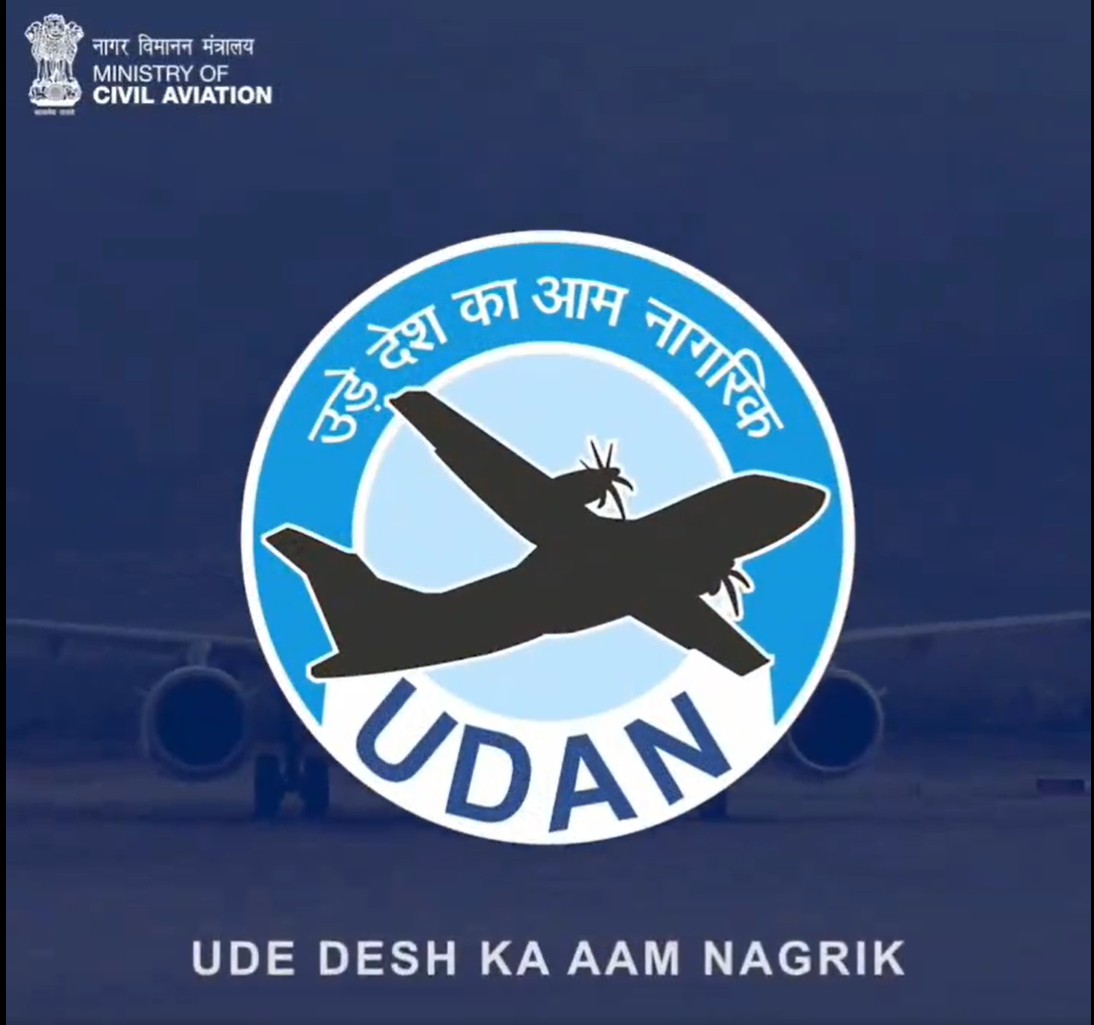India’s regional connectivity scheme UDAN (Ude Desh ka Aam Nagrik) marks nine years of transforming how Indians travel. The government launched the scheme on October 21, 2016, to make air travel affordable and accessible for the common citizen. Nine years later, UDAN stands as one of India’s most successful aviation initiatives, connecting small towns and remote regions to the national network and driving economic growth from the ground up.
From Concept to Nationwide Connectivity
The Regional Connectivity Scheme (RCS-UDAN) set out to democratise air travel and bridge regional gaps across India. Since its launch, airlines have operationalised 649 routes, linking 93 aerodromes, including 15 heliports and two water aerodromes. The scheme extended air connectivity to some of the country’s most difficult terrains, such as the North-East, Andaman and Nicobar Islands, and Lakshadweep, ensuring that even the remotest regions joined the national aviation map.
Carriers have already flown more than 1.56 crore passengers on 3.23 lakh flights, connecting smaller towns directly with major economic centres. To make these regional routes commercially viable, the government has disbursed ₹4,300 crore in Viability Gap Funding (VGF), ensuring the sustainability of operations for airlines on lesser-known routes. In its next phase, UDAN plans to add 120 new destinations and serve 4 crore passengers over the next decade.
Adding a touch of inclusivity beyond connectivity, the UDAN Yatri Café at Kolkata and Chennai airports offers affordable food – tea for ₹10 and samosas for ₹20 – making airports accessible not just through cheaper air travel but through affordable on-ground facilities as well.
India Expands Its Skies: Airports, Jobs, and Economic Growth
India’s civil aviation sector has emerged as one of the fastest-growing industries, making the country the third-largest domestic aviation market in the world. The number of airports has more than doubled, from 74 in 2014 to 163 in 2025, and the government aims to increase this number to 350–400 by 2047. The aviation industry today supports 7.7 million jobs, including 369,000 directly, while demand for skilled professionals-pilots, engineers, and logistics experts -continues to rise sharply.
According to the International Civil Aviation Organization (ICAO), every rupee invested in aviation generates three times its value in economic activity and creates six times as many jobs across allied industries. Domestic passenger traffic has grown at 10–12% annually, and projections show it will rise six-fold to 1.1 billion passengers by 2040. The commercial airline fleet, which stood at around 400 aircraft in 2014, is expected to expand to 2,359 by 2040, while total employment in the sector is projected to reach 25 million. Together, these developments position aviation as a cornerstone of India’s future economic growth.
From Krishi UDAN to Digi Yatra: Policies Driving Growth
Several policy measures are propelling India’s aviation transformation. The government launched Krishi UDAN in September 2020 to enable faster transport of agricultural produce and perishables, offering a 50% freight subsidy under Operation Greens to benefit farmers in tribal and Northeastern states. The same year, during the COVID-19 lockdown, Lifeline UDAN ensured uninterrupted medical and essential supplies by operating 588 flights, carrying 1,000 tonnes of cargo over 5.45 lakh km, with a focus on remote regions.
To expand infrastructure, the Greenfield Airports Policy encourages public–private partnerships for building new airports and reducing congestion at metro hubs. On the digital front, Digi Yatra, launched in 2022, allows paperless, contactless boarding through facial recognition technology. By March 2025, more than 52.2 million passengers had used Digi Yatra, and the app had recorded 12.1 million downloads across Android and iOS platforms.
The government has also modernised emerging aviation segments through the Drone Rules 2021 and a Production-Linked Incentive (PLI) Scheme, liberalising drone operations, boosting domestic manufacturing, and disbursing ₹34.79 crore in FY 2024–25 to strengthen India’s self-reliant drone ecosystem. At the same time, the Directorate General of Civil Aviation (DGCA) continues to expand Flight Training Organisations (FTOs) to meet the growing demand for 30,000–34,000 pilots over the next 15 years. The DGCA also aims to achieve 25% female representation across aviation roles by 2025.
A key legislative reform, the Bharatiya Vayuyan Adhiniyam, 2024, replaced the Aircraft Act of 1934, aligning India’s aviation laws with global standards under the International Civil Aviation Organization (ICAO). The Act simplifies licensing, strengthens oversight, and supports Make in India and Atmanirbhar Bharat by promoting indigenous manufacturing and harmonising regulatory frameworks with international conventions.
India’s Aviation Vision 2047
The government envisions aviation as a major engine of India’s $10 trillion economy by 2047, when the nation celebrates 100 years of independence. The plan projects over 350 airports, 1 billion passengers annually, and 25 million jobs, all supported by green fuels, digital innovation, and inclusive access. The Ministry of Civil Aviation expects sectors such as Maintenance, Repair, and Operations (MRO), drone manufacturing, and pilot training to become significant employment generators. These focus areas align India’s aviation roadmap with global trends in sustainability, innovation, and efficiency.
The Bigger Picture
UDAN’s first flight in 2016 marked the beginning of a new era in affordable air travel. Today, over 1.5 crore passengers have benefited from the scheme, which has transformed how India connects its people and its economy. Combined with initiatives like Digi Yatra, Krishi UDAN, and the Drone PLI Scheme, UDAN reflects India’s broader vision to make air travel a bridge to opportunity rather than a luxury.
India’s skies are growing busier each year, carrying not just travellers but aspirations. The aviation sector now drives economic inclusion, links communities, and powers India’s march










